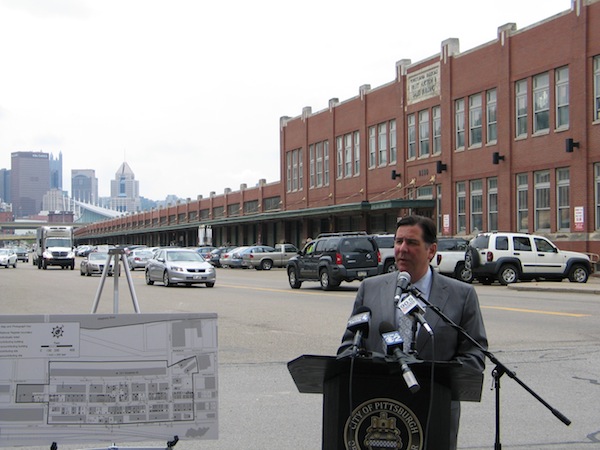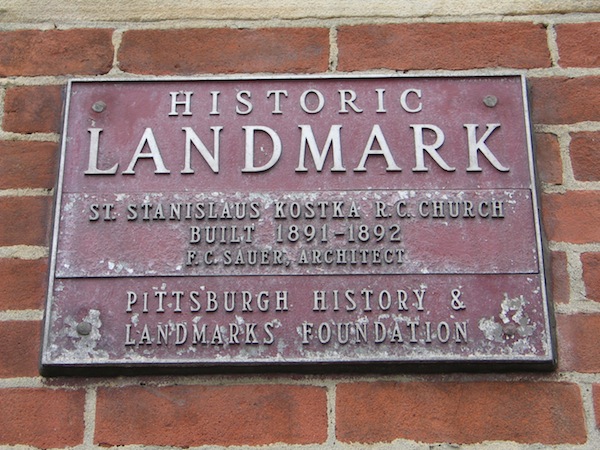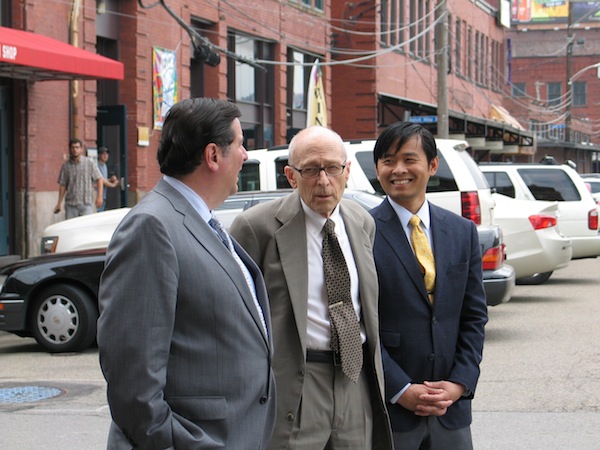
Strip District Listed on National Register of Historic Places
Mayor William Peduto announced that the National Park Service has designated Pittsburgh’s Strip District as a National Historic District by adding it to the National Register of Historic Places.
Recognized for its historic significance as an area of commerce, religion, and architecture, the 13-block district is bounded by Railroad Street, the Pennsylvania Railroad Yards, Liberty Avenue, 15th Street, and 22nd Street. It is comprised of 64 buildings that contribute to the designation and also includes the previously National Register-listed St. Stanislaus Kostka Roman Catholic Church.
“The Strip exemplifies what we love about Pittsburgh— it is a special place that honors the past while looking forward to the future,” Mayor Peduto said.
National Register designation promotes authenticity of place by celebrating the historic character of a place, and stimulates economic development through federal rehabilitation tax credits and easements that are available to property owners for the certified rehabilitation for income-producing purposes.
“This is an important recognition for an area that is vital to the culture and history of our city and our region,” said PHLF President Arthur Ziegler.
Listing on the National Register does not interfere with a private property owner’s right to alter, manage, or dispose of property as long as government funding is not involved. Indeed, it often changes the way communities perceive their historic resources and gives credibility to preservation efforts.
The Urban Redevelopment Authority of Pittsburgh and other donors helped fund this application and Michael Baker Corporation was the consultant on the project.
Some of the prominent structures now in the district include: the Pennsylvania Railroad Fruit Auction and Sales Building (1929)—commonly known as the Produce Terminal— Peoples Bath (1908), which now houses a yoga studio, General Merchandise Outlet, and Little Bangkok; the Produce Exchange Building (c. 1904), now housing the Mike Feinberg Company and Schorin Company; and St. Patrick’s Roman Catholic Church (1936).
“Neighbors in the Strip is delighted that the National Register of Historic Places has recognized the Strip District as an Historic District. We celebrate the 100-year-old local businesses, steeped in tradition, that have contributed to creating Pittsburgh’s Historic Market District, and look forward to supporting the next generation of local businesses,” said Becky Rodgers, executive director of Neighbors in the Strip.
PHLF completed its nomination in December following broad public input. The Pennsylvania Historical & Museum Commission unanimously approved the application in February.
The Strip District now makes 18 such National Register-listed districts in Pittsburgh and joins some 10,000 other such districts in the United States.



